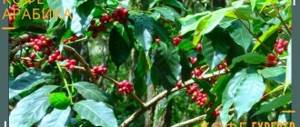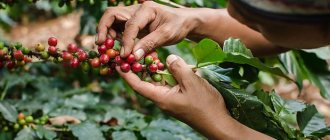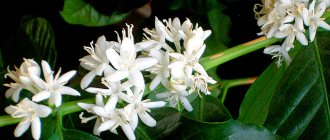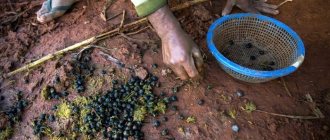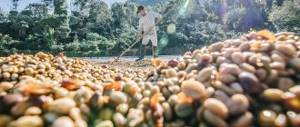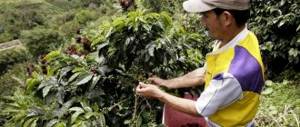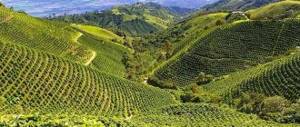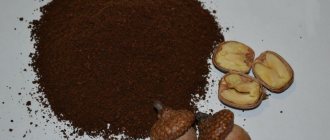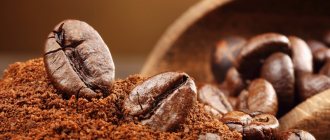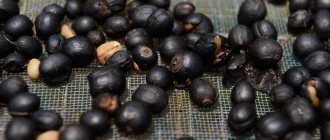- Baltic coffee company
- »
- Articles about coffee
- »
- How is coffee harvested?
In order for the inhabitants of our planet to enjoy excellent coffee, its beans must not only be grown, but also collected. This employs a lot of people in those countries where this agricultural crop is one of the main ones (or, moreover, the most basic one). The process of collecting coffee is quite labor-intensive and difficult to mechanize. According to statistics, one experienced picker per day is able to collect approximately seventy kilograms of coffee fruits.
Collection of different varieties of coffee: specifics of the process
Experts count three botanical varieties of coffee: Arabica, Robusta and Liberica. Each of them has its own specificity, which is expressed, among other things, also in the methods and features of the collection process.
As for Robusta and Liberica coffee fruits, after ripening they remain on the trees for quite a long time. This is necessary so that they, as they say, “dry”, and subsequently it is easier not only to collect them, but also to pre-process them.
Such a widespread and considered the most valuable variety of coffee, like Arabica, is harvested in several stages. The fact is that the fruits of this botanical variety ripen unevenly on trees, and therefore the ripe ones are removed step by step, leaving the unripe ones to “reach condition.” In most cases, the interval between collection stages is about two weeks, and most often there are three of them: preliminary, main and late.
It is mainly thanks to the gradual process that it is possible to ensure that the grains are ultimately of exceptionally high quality. In this case, a lot depends, of course, on the level of qualifications of those people who are involved in harvesting coffee: experienced pickers remove only ripe beans, and not overripe or underripe ones.
How coffee is collected.
Harvesting is an expensive procedure. Depending on the harvesting method, the cost of harvesting coffee can range from one-third to one-half of the total cost of maintaining a coffee plantation. In world practice, there are two methods of harvesting coffee: manual and mechanized.
Manual method
Harvesting in this way is a very labor-intensive process. All members of the plantation owner’s family, including children, participate in it. If the harvest is good and the plantation is large, then pickers have to be hired, which entails high costs.
It is important to note that coffee fruits (coffee cherries) should not be allowed to overripe. Seeds in such fruits can spoil the taste characteristics of the entire batch. Therefore, harvesting must be done quickly, and this requires a large number of mercenaries.
Coffee plantation yield
This indicator depends on a large number of factors: the type of coffee, climatic conditions, the nature of the soil, the height of the plantation above sea level, etc., etc. However, there are still some average indicators. As a rule, from one hectare of coffee plantation, from 850 to 1600 kilograms of coffee fruits are harvested, and in some particularly fruitful years - up to 2000 kilograms.
Approximately 2.5-3 kg of berries are harvested from one Arabica tree. Of these, about 0.4-0.5 kilograms of roasted coffee beans are obtained in a toga. Thus, it turns out that one tree produces enough coffee per year to make about fifty cups of the drink.
Stripping
The next method, stripping, involves harvesting coffee by stripping all the fruits in a row from the tree only when most of the fruits are ripe. Often these fruits include unripe or completely overripe ones, as well as branches and leaves of coffee trees.
It is important to note that it is almost impossible to distinguish ripe fruits from unripe ones when picking the fruits. But during heat treatment by roasting, unripe grains will have a light shade. But overripe ones will turn black when roasted, like coal. Using this method, low quality coffee is obtained.
Basic methods of collecting coffee
If we talk about technologies for collecting coffee beans, there are several of them today. They differ quite seriously in the level of mechanization and complexity. The main ones are the following:
- Picking;
- Stripping;
- "Comb";
- Mechanized.
Picking is the most labor-intensive method of harvesting coffee beans, but it ensures the highest quality of the finished product. This method consists of experienced pickers manually picking only ripe berries from the trees. Thanks to this, batches of coffee collected using picking are characterized by a very high degree of homogeneity. However, since this method is quite expensive, every year it is used less and less in industrial coffee harvesting.
Stripping is also a manual method of collecting coffee berries, but it differs from picking in the absence of “selectivity”: the picker removes absolutely all the fruits on it from the branch. Technically, this procedure consists of the picker holding a branch with one hand, and with the other, using sliding movements directed from top to bottom, “rips off” both berries and leaves from it. Stripping is most often used when, for some reason, the crop simply could not be collected on time, and it provides a much lower quality of the collected grains than picking.
Another manual method of collecting coffee is the “comb,” however, it differs from stripping and picking in that it involves the use of an additional device. It is a crossbar with sparse teeth and in appearance it really resembles a comb. The branch is “combed” with it, and fruits (mostly ripe ones) fall onto the cloth spread under it. This method of collecting coffee beans is quite simple, technologically advanced, productive, and provides very good quality beans.
In recent years, the mechanized method has been increasingly used. It involves the use of special vibration equipment that “shakes” the berries from the trees. Since not only mature, but also green fruits, as well as many leaves, fall off, the quality of such collection is low. But it provides high productivity and does not require much labor. The mechanized method of collecting coffee is most common in Brazil.
Manual coffee picking
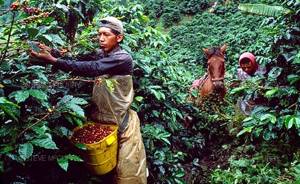
There are several ways to harvest coffee fruits. This extremely labor-intensive task is carried out by the entire working population, including children. An experienced professional picker can collect up to 70 kilograms of coffee fruits per working day.
The coffee harvest season takes several months. Each coffee-producing country has its own. For example, in Guatemala the coffee harvest stretches from August to May, on the island of Java - from May to December, in Cuba - from July to December, in Brazil - from April to August, etc.
It is easier to collect the fruits of the Robusta and Liberica varieties: they do not fall off when overripe and therefore can dry on the tree. Arabica is harvested in several stages as the fruits ripen, at intervals of two weeks. As a rule, there are three such techniques - preliminary, main and late.
This selective harvesting of fully ripened fruits ensures high quality coffee beans. At the same time, it is important for pickers to prevent them from overripening, which can be easily detected by the black color of the berries. It leads to a decrease in the quality of fruits and to large losses due to shedding.
There is a method of harvesting coffee in which a special comb with sparse and flexible teeth is passed along the branch. In this case, ripe fruits fall onto the cloth spread under the tree, and leaves and unripe fruits remain on the branches.
↑ up
Stripping
The stripping method (from the English “to strip” - to tear off, rip off, scrape off, deprive of something) is quite simple: wait until most of the berries ripen and, holding a branch with your left hand, slide along it from top to bottom with your right hand, and pick off everything - flowers , green, ripe and overripe black fruits, leaves, etc. This is the most primitive method and gives poor results. However, it is used in some African countries and in Brazil during harvesting.
↑ up
Picking
The most common and traditional method of collection is picking (from the English “to pick” - to choose, select, collect, pick). It consists of selectively picking only ripe fruits with your hands with great care. The method allows you to achieve a uniform harvest, but at the same time productivity is lost.
↑ up
Methods of collecting coffee
There are several ways to harvest the fruits of the coffee tree, differing significantly in complexity, level of mechanization and quality.
- Picking is the most labor-intensive method of collecting coffee cherries. Its essence is that the picker selects and picks only ripe berries from the branch. The method is extremely gentle, ensures the highest quality and uniformity of grains in the batch, but, for certain reasons, it is used less and less on an industrial scale;
- Stripping is another “manual” method of collecting fruits. It involves picking all the berries from a branch by hand. To start collecting, you need to wait until most of the fruits are ripe. The plucking technology is as follows: the worker holds the branch with one hand, and with the other, in a sliding motion from top to bottom, plucks the berries (including green and overripe ones), as well as leaves. This method is used mainly in cases where the harvest is not harvested on time. It does not ensure high harvest quality: green beans, overripe rotten beans, and beans spoiled by insects that get roasted significantly worsen the taste of coffee;
- A comb is the only manual method of picking berries that uses an additional device. A kind of comb with flexible and wide teeth is used to remove fruits from a branch that fall onto a cloth spread on the ground. This method, unlike stripping, prevents the removal of most green berries and leaves from the branches. Despite its low cost, simplicity and relatively high productivity, it provides satisfactory collection quality;
- Mechanized - a method of harvesting using machines and mechanisms. To remove fruits, vibrating equipment is used, as well as more technologically advanced brush harvesters. The main advantage of the method is high productivity with low labor costs. Among the disadvantages are the not very high quality of harvesting (the harvester also removes damaged fruits and leaves) and the possibility of damage to the tree. The mechanized method is especially popular in Brazil.
After the harvest is completed, the harvest is sent for sorting, cleaning, roasting and grinding.
Features of harvesting
The harvest season lasts several months, in some areas up to six months. The collection of berries of different varieties (robusta, liberica, arabica) occurs differently. The fruits of the first two, after ripening, “dry out” for some time, remaining on the trees. This facilitates their collection and subsequent primary processing.
Arabica is harvested in three stages, as the coffee berries ripen, since both ready-made and still green fruits can be on the tree at the same time. The quality of the beans largely depends on the experience of the pickers. It is important to collect ripe ones, and not overripe or green ones.
A coffee picker can collect no more than 60 kg per working day. Each Arabica tree produces on average about 3 kg of berries, which is only half a kilogram of roasted coffee beans. Robusta is more prolific.
How long does it take for raw coffee to mature?
Coffee bean harvest seasons
The coffee harvest is a busy time. This very labor-intensive task is carried out by the entire working population, including children. An experienced professional picker can collect up to 70 kilograms of coffee fruits per working day. The coffee harvesting season takes several months. Each coffee-producing country has its own:
In Guatemala, the coffee harvest stretches from August to May,
On the island of Java - from May to December,
In Costa Rica - from July to December,
In Brazil - from April to August, etc.
It is easier to collect Robusta and Liberica; their fruits do not fall off when overripe and therefore can dry on the tree.
Arabica fruits are harvested in several stages as the fruits ripen, with an interval of two weeks. As a rule, there are three such techniques - preliminary, main and late.
This selective harvesting of fully ripened fruits ensures high quality coffee beans. At the same time, it is important for pickers to prevent them from overripening, which can be easily detected by the black color of the berries. It leads to a decrease in the quality of fruits and to large losses due to falling.
The harvest is considered average if about 0.8 tons of fruit are obtained from one hectare, good if 1.2 tons are harvested; excellent if the collection exceeds 2 tons.
Every year, approximately 2.5-3 kilograms of fruit are obtained from one tree, which is 2000 beans, that is, 500 grams of raw or 400 grams of roasted coffee.
In other words, each coffee tree makes it possible to prepare an average of 50 cups of aromatic drink per year.
Methods of collecting coffee
The method of stripping in translation is to rip off, scrape off.
Its meaning is quite simple: they wait until most of the berries ripen and, holding the branch with their left hand, with their right hand they slide along it from top to bottom and pick everything in a row - flowers, green, ripe and overripe black fruits, leaves, etc.
Green fruits produce coffee beans, which in appearance are no different from ripe fruit beans. However, after frying, they remain light in color and have no aroma.
Specifics of collecting different varieties
Robusta and liberica fruits tend to remain on the tree during ripening and overripening. This feature of the varieties is used to dry the berries directly on the plant, which greatly simplifies the task of picking and pre-processing.
Arabica beans are harvested in several stages. Ripe fruits are removed from the plants several times, leaving green ones until the next time. The interval between stages is usually two weeks. There are preliminary, main and late stages of Arabica harvesting.
Gradual harvesting of berries allows us to achieve exceptionally high quality grains. Much with this approach depends on the qualifications of the picker, because overripe berries (remaining on the plant from the last time) significantly reduce the overall quality of the harvest, and also increase losses in the form of fallen and spoiled fruits.
